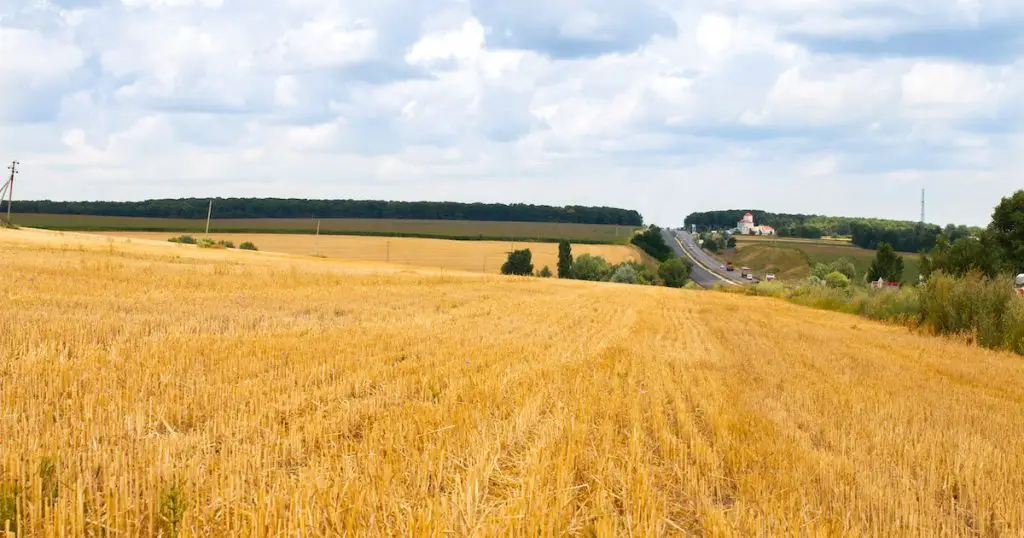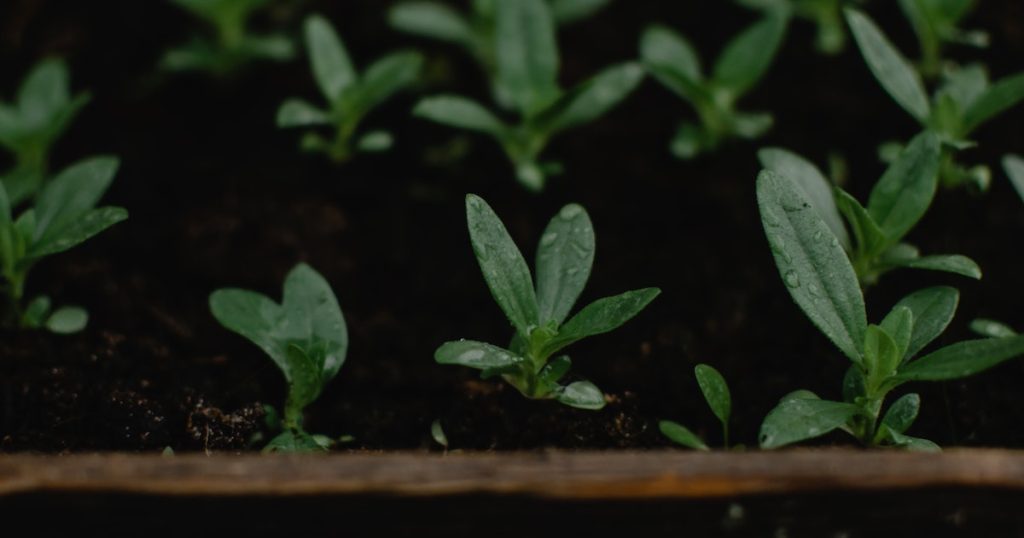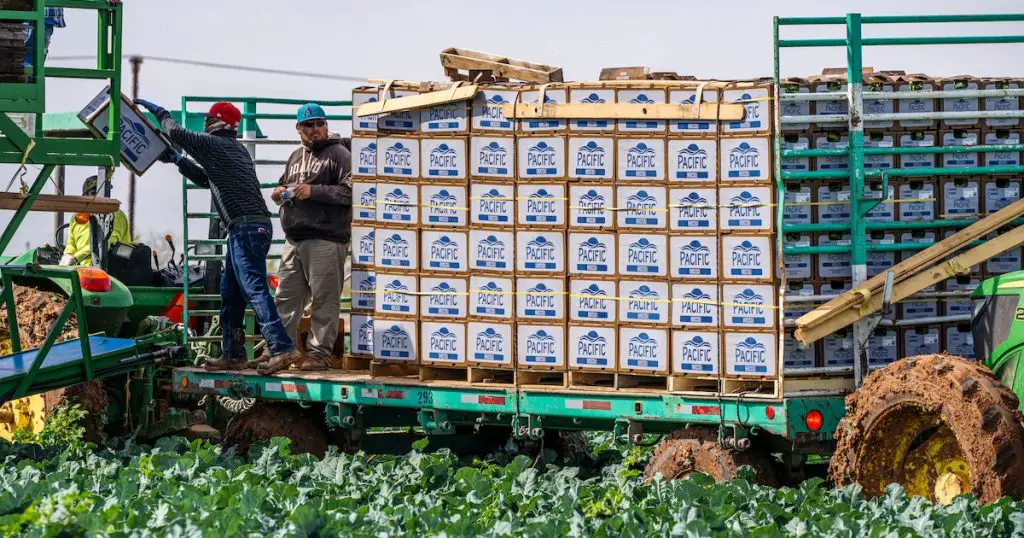The magic of cultivating a garden in Prescott, Arizona, is a feeling many green thumbs share. With a climate that supports a wide variety of plants and the opportunity to grow your own nutritious and delicious broccoli, gardening in Prescott offers an engaging and rewarding pastime.
This comprehensive guide will elucidate when to plant broccoli in Prescott, AZ, to help you optimize your harvest and savor the joy of reaping what you’ve sown.

Beyond its culinary appeal, broccoli is a nutrition powerhouse, holding a vital place in global diets for centuries. Hailing from the Mediterranean, this vitamin-rich vegetable is now a staple on plates worldwide.
Broccoli’s compatibility with Prescott’s climate adds another reason for gardening enthusiasts in the area to consider cultivating this wholesome vegetable.
Getting to Know Broccoli
Broccoli, with its rich green color and unique shape, is a familiar sight in kitchens worldwide. Its history dates back to the ancient Roman times, speaking volumes about its enduring nutritional and culinary value.
Rich in vitamins C and K, and a good source of fiber, broccoli is widely recognized for its health benefits. This nutrient-packed vegetable is known to support immune health, promote heart health, and even aid in digestion.
Growing broccoli in Prescott, AZ, is especially rewarding. The climate is perfectly suited to this cool-season crop, offering the right conditions for it to thrive. However, understanding the intricacies of Prescott’s weather and the growing cycle of broccoli is vital to achieve a successful harvest.
Understanding Prescott’s Climate
Prescott’s climate, characterized by a balance of mild winters and warm summers, is especially conducive to varied plant growth. This climate, referred to as a continental climate, presents a favorable environment for growing a range of vegetables, broccoli included.
The temperature fluctuations that come with changing seasons significantly influence plant growth. Each plant has unique climate needs, and understanding these needs helps ensure a bountiful harvest. For broccoli, the cooler temperatures are preferable, making it a cool-season crop.
The Right Season for Planting Broccoli in Prescott, AZ
Choosing the right season for planting broccoli is crucial. Broccoli flourishes best in cooler environments, with ideal temperatures ranging between 65 to 75°F. Given the climate in Prescott, the best time to plant broccoli is either early spring or late summer.

This timing ensures that the plant matures when temperatures are falling, which is ideal for broccoli growth. Understanding and leveraging Prescott’s climate in this way can significantly enhance the success of your broccoli crop.
Understanding Broccoli’s Growth Cycle
To maximize your broccoli harvest, understanding its growth cycle is key. From the initial stage of seed germination to the final stage of harvest, each phase of the broccoli growth cycle has unique requirements and timings.
Knowing when to sow your broccoli seeds, how to nurture the seedlings, and when to harvest the mature plants can make the difference between a good yield and a great one. We’ll explore these stages in more depth in the following sections, providing a roadmap for your broccoli gardening journey in Prescott, AZ.
Starting Broccoli Indoors
Choosing to start your broccoli indoors can be a strategic move, particularly in areas where weather conditions may not always be predictable. Starting seeds indoors offers a controlled environment, which can be helpful in ensuring a robust start for your broccoli plants.
Seed trays or small pots are usually preferred for starting broccoli indoors. Sowing the seeds about 0.5 inch deep, and keeping the soil consistently moist can promote healthy germination. Usually, within 2-3 weeks, the seedlings are ready for transplanting.
Preparing Your Garden for Planting
While your seedlings are growing, it’s time to prepare your garden for planting. Broccoli prefers well-drained soil with a slightly acidic pH. You can test your soil pH with a kit from a local garden center or online. If your soil is more alkaline, adding organic matter or sulfur can help balance it.
Location selection in your garden is also crucial. Broccoli needs full sun, so choose a location that receives at least six hours of sunlight daily. Also, remember to space your plants adequately, as crowded plants can limit broccoli head development.
Transplanting Seedlings

The act of moving a plant from one location to another, transplanting, can be a tricky process but rewarding when done right. Once your seedlings have developed their second set of leaves (usually around 2-3 weeks), they’re ready to be moved to your garden.
Choose a cloudy day or late afternoon for transplanting to prevent the seedlings from drying out. Dig a hole large enough for the seedling’s roots, place it in, and cover the roots with soil, pressing gently around the base of the plant. Water them thoroughly after transplanting.
Direct Sowing: An Alternative to Transplanting
An alternative to starting broccoli indoors and then transplanting is direct sowing. Here, you sow the seeds directly into the garden soil. This method can work well if your garden soil is well-prepared and the outdoor temperatures are consistently within the ideal range for broccoli.
To directly sow broccoli seeds, plant them 0.5 inch deep and about 3 inches apart. After they germinate and grow a couple of inches tall, thin the seedlings to give them enough space to grow, usually around 12-20 inches apart.
Caring for Your Broccoli Plants
Caring for your broccoli plants requires attention and dedication, but the results are worth it. Regular watering is essential, especially during dry periods. However, take care to avoid overwatering, as it can lead to root problems.
Broccoli plants are heavy feeders. A balanced vegetable fertilizer can help provide the necessary nutrients. Make sure to follow the manufacturer’s instructions when applying the fertilizer.
Preventing pests and diseases is also crucial. Regularly check your plants for signs of pest activity or disease. Use organic pest control methods, such as introducing beneficial insects or using an organic insecticidal soap, to keep pests at bay.
Harvesting Your Broccoli

Knowing when and how to harvest your broccoli is key to maximizing the yield and taste. Broccoli is usually ready to harvest 55-85 days after transplanting, depending on the variety. The central head should be 4-7 inches in diameter and the buds should still be tight.
Harvesting in the morning, before the soil heats up, yields the crispest, most flavorful produce. Use a sharp knife to cut the stalk at an angle, 5-8 inches below the head. This angle prevents water from gathering on the cut stalk, which can lead to rot.
Post-Harvest Care
Post-harvest care is as important as the growing process. Once harvested, immediately chill the broccoli to preserve its crispness and nutritional value. Store it unwashed in the vegetable crisper drawer of your refrigerator where it can stay fresh for up to 2 weeks.
After the harvest, consider adding compost or a soil amendment to replenish the nutrients consumed by the crop. This helps prepare your garden for the next planting cycle.
Growing Broccoli Year-Round
With careful planning, you can enjoy fresh broccoli from your garden year-round. Successive planting, where you plant new seeds every 2-3 weeks, ensures a continuous harvest. Keep an eye on the weather, as broccoli is sensitive to heat and will bolt if temperatures are too high.
Understanding crop rotation is crucial for year-round planting. Rotating crops helps prevent the build-up of soil-borne pests and diseases and can increase soil fertility. After a season of growing broccoli, consider rotating with a different crop family, like legumes or root vegetables.
Understanding and Mitigating Common Problems
Growing broccoli in Prescott, AZ, can present some challenges. Common pests include cabbage worms, aphids, and flea beetles. Regularly inspect your plants for signs of these pests. Non-chemical solutions like introducing beneficial insects, handpicking, and using row covers can be effective strategies.
Broccoli can also be susceptible to diseases like clubroot and downy mildew. Planting disease-resistant varieties, ensuring good soil health, and practicing crop rotation can help prevent these problems.
Gardening Resources in Prescott, AZ
Prescott is home to a community of gardening enthusiasts, providing valuable resources for new and experienced gardeners alike. The Prescott Farmers Market is a great place to connect with local growers and learn from their experiences.
Local garden stores, such as Watters Garden Center, offer a wide variety of gardening supplies and knowledgeable staff. Online resources like the University of Arizona Cooperative Extension also offer valuable information tailored to local conditions.
Community Gardening in Prescott, AZ
Community gardening is a rewarding experience that lets you grow your own vegetables while connecting with fellow gardeners. Prescott, AZ, offers several community gardens that provide not just a plot of land but also a supportive and knowledgeable network of gardeners.
Prescott Community Gardens is a popular choice, offering tools, compost, and regular educational events. Participating in community gardening is an opportunity to learn from others, share your gardening triumphs, and help build a sustainable local food system.
Why Grow Broccoli in Prescott, AZ
Growing broccoli in Prescott, AZ, comes with several benefits. The high-altitude climate provides an ideal environment for this cool-season crop.
Moreover, cultivating broccoli in your backyard or community garden contributes to a sustainable lifestyle, encourages healthy eating, and offers educational opportunities for kids and adults alike.
Broccoli is not just a nutrient-rich vegetable but also an interesting plant to observe from germination to harvest. Its different stages of growth provide a fascinating insight into plant life, offering valuable lessons in patience, care, and the cycle of life.
Frequently Asked Questions
In this section, we will be delving into some of the most common inquiries and curiosities that surround our topic.
Can I grow broccoli in Prescott during the summer?
Broccoli prefers cooler temperatures and might not grow well in the high heat of a Prescott summer. However, planting in late summer for a fall harvest can work well.
How much water does broccoli need?
Broccoli prefers evenly moist soil. Water deeply once a week, but adjust based on weather conditions. The goal is to keep the soil moist, not soggy.
Can I grow other vegetables with broccoli?
Yes, companion planting can be beneficial. Good companions for broccoli include beets, carrots, onions, and herbs like dill and mint. Avoid planting broccoli with tomatoes, peppers, or strawberries.
Conclusion
Understanding when to plant broccoli in Prescott, AZ, is an integral part of achieving a successful harvest. With the city’s suitable climate and a community of garden enthusiasts, growing broccoli can be a rewarding experience.
Whether you’re a novice gardener or a seasoned green thumb, we hope this guide provides useful insights to help you on your broccoli-growing journey.



Leave a Comment
You must be logged in to post a comment.